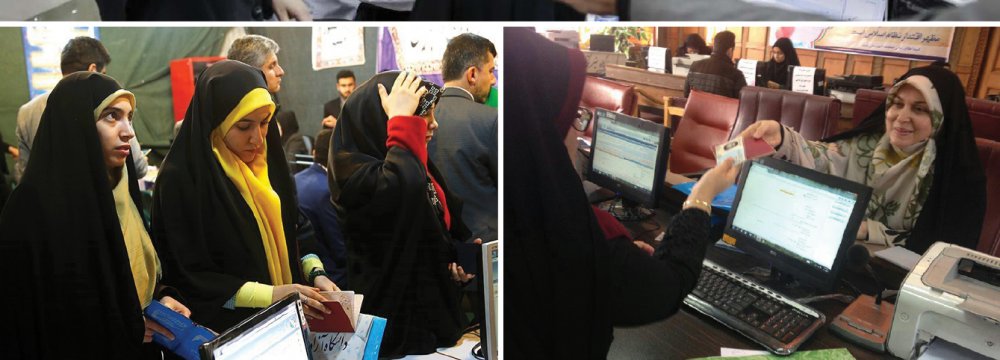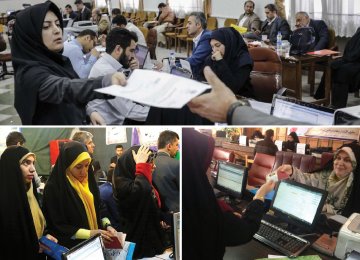Women claimed 30% of the 21 seats in last week's Tehran City Council elections, a record for the TCC.
Urban and rural council elections were held simultaneously with the 12th presidential elections on May 19.
A total of 287,425 candidates comprising 17,885 women and 269,540 men registered across the country for the 39,575 seats in the urban and rural council elections. The number of female candidates increased by 1% from 5.4% in 2013 to 6.3% of the total candidates who registered this year; however, more women have found their way into the city and rural elected bodies.
"The increase indicates a significant growth in the number of women willing to be involved in local governance and decision-making process and should not be underestimated," said Vice President for Women and Family Affairs Shahindokht Molaverdi in a communiqué on her Telegram channel.
The share of women is still small and far from realizing their true potential, considering that they comprise 49.3% of the population, but, Molaverdi underlined, even the marginal growth signifies hope.
"Women have slowly but surely joined urban and rural managerial systems and will continue to do so."
Figures show a stronger presence of women in social, cultural, and political spheres under the tenure of President Hassan Rouhani.
For the Tehran council, women comprised one-fifth (522) of the 2,722 approved candidates (out of 3,000), according to IRNA.
Even in the lesser-developed Sistan-Baluchistan Province, women set a record of 415 women in city and rural councils. In 14 villages of one county, Khash, two out of every three council members are women, according to District Chief Mojtaba Shojaei.
Women in urban and rural councils numbered over 3,000 before the recent elections. There is no official report by the Interior Ministry on the number or percentage of women who have secured seats on a nationwide scale. But reports indicate that six provinces namely Kerman, Sistan-Baluchistan, Tehran, Fars, Khorasan Razavi, and Mazandaran are leading in the number of elected female members.
In an all-time first, women came in first and second on the list of elected members in Ardebil, Bandar Abbas (Hormozgan Province), and Shahre Kord (Chaharmahal-Bakhtiari Province).
Bright Future
Zahra Nejad-Bahram, political activist, urban management expert and an elected member in Tehran City Council, believes that even the meager 1% increase heralds a bright future for women's presence in sociopolitical spheres.
"The developments are positive in both cities and rural areas. Women are feeling more competent with the support of the general public," she said.
Nejad-Bahram is optimistic of women graduating to become mayors. "I think women have proved that they can be active and effective in various areas in the society. They are more sensitive towards social issues and have practical ideas and workable plans, particularly since as mothers they are more insightful toward a better environment for families and children."
She also expects the women factions in the new urban and rural councils to work for women on priority and follow up on issues long overdue in pertinent areas.
The number of female village chiefs has increased significantly over the past four years and after the Rouhani government took office in 2013. Female village chiefs increased by 43% since 2013 and their numbers reached 2,167 in the last elections. The number of female village heads has increased 10-fold since their first city and rural council elections 16 years ago.
In the current Majlis (parliament) there are 17 women lawmakers, the first largest representation of women in the 290-member elected chamber in 16 years, after the fifth Majlis (1996-2000) which had 14 women lawmakers.






Add new comment
Read our comment policy before posting your viewpoints